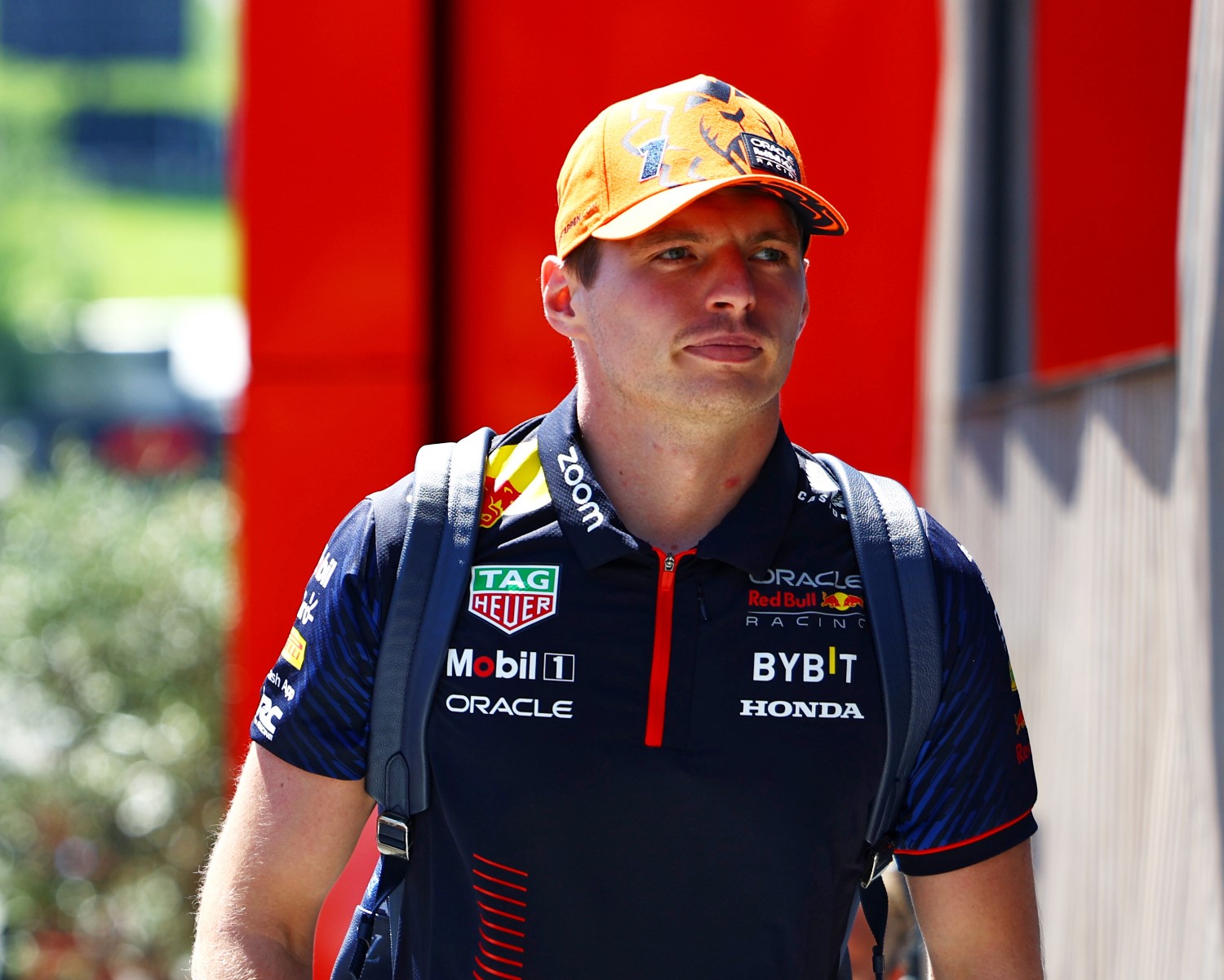Predicting Future Champions of Formula 1: An Analytical Approach
Formula 1, the zenith of motorsport, is not just a test of speed but a battleground of strategy, precision, and technological prowess.
In this high-stakes arena, predicting future champions involves more than just gauging the fastest car or the most skilled driver; it requires a deep dive into a complex array of data and performance metrics that define success on the track.
With the sport’s ever-increasing reliance on data analytics, understanding the nuances of these metrics and their interplay can offer fascinating insights into who might dominate the podiums in the coming seasons.
This article lays out the multifaceted elements that should be considered to forecast the future titans of Formula 1. This could be the basis of a future analytical method that could be created and presented to the industry.
From dissecting key performance indicators that spotlight a team’s efficiency and a driver’s prowess to unraveling the impact of cutting-edge technological advancements and team dynamics, we aim to provide a comprehensive outlook on the potential trajectories of Formula 1’s most promising contenders.
By meticulously examining historical trends, current capabilities, and future innovations, we endeavor to shed light on the evolving landscape of Formula 1 and the contenders poised to rise to the challenge.
For fans and analysts alike, delving into the analytical aspects of Formula 1 offers not just a glimpse into the future of the sport but also enriches the appreciation of the intricate strategies and decisions that pave the way to championship glory. As we navigate the intricacies of data-driven predictions, we invite readers to join us in contemplating the thrilling possibilities in the quest for the next Formula 1 champion.

Key Performance Indicators in Formula 1
In the high-octane world of Formula 1, success is measured by a complex matrix of key performance indicators (KPIs) that go beyond mere speed. These metrics offer a granular view of a team’s and driver’s performance, providing insights into their potential for clinching future championships.
Precision in Lap Times
Lap times are a fundamental gauge of a car’s speed and a driver’s skill in harnessing that speed. Analyzing lap times across various circuits under different conditions offers a comparative measure of consistency and adaptability, essential traits for a championship contender.
Pit Stop Efficiency
The orchestration of a pit stop is a ballet of precision and speed, where every millisecond counts. Teams that consistently demonstrate flawless pit stop executions gain crucial seconds during a race and reflect a high level of team coordination and technical prowess.
Reliability and Durability
A critical KPI is the reliability of a car’s components, especially over the grueling span of a race and the season. A car that frequently encounters mechanical failures is less likely to secure championship points, no matter the speed or skill of the driver.
Driver Performance Metrics
Beyond the machinery, a driver’s ability to execute race strategies, adapt to changing track conditions, and make split-second decisions under pressure is pivotal. Driver performance metrics, such as overtaking success rates and qualifying positions, provide a lens through which to assess a driver’s competitive edge.

Team Dynamics and Development Pace
The rate at which a team can develop and refine their car throughout the season often dictates their competitiveness. Teams that can rapidly innovate and adapt to the evolving demands of the circuit are more likely to stay ahead in the championship race.
For enthusiasts looking to dive deeper into these performance metrics and their implications for future Formula 1 champions, platforms like Tips.gg offer a wealth of data and analysis. Such resources amalgamate vast amounts of racing data, providing fans and analysts with comprehensive insights into the intricacies of team and driver performances, enriching the Formula 1 viewing experience and offering a more informed perspective on the potential trajectory of teams and drivers in the quest for championship glory.
Key Takeaways
- Lap Time Analysis: A critical measure of a car’s speed and a driver’s ability to maximize it across different circuits.
- Pit Stop Precision: Reflects team coordination and technical efficiency, with significant implications for race outcomes.
- Reliability: A key determinant of a team’s ability to compete consistently at the highest level throughout the season.
- Driver Skills: Essential for executing strategies and adapting to dynamic race conditions.
- Development Pace: The ability of a team to innovate and improve their car can significantly influence their championship prospects.
Understanding these KPIs offers a comprehensive view of what it takes to succeed in Formula 1. As the sport evolves, these metrics will remain central to predicting future champions, guiding teams, drivers, and fans toward a deeper appreciation of the complexities that define this pinnacle of motorsport.
Technological Advancements and Team Dynamics in Formula 1
The relentless pursuit of excellence in Formula 1 is not just confined to the driver’s skill or the car’s speed. Technological innovations and the intricate dynamics within a team play pivotal roles in shaping the champions of tomorrow. This section delves into how these factors contribute to a team’s success and the potential challenges they pose.
Cutting-Edge Technological Innovations
Formula 1 has always been at the forefront of automotive technology, with teams continuously pushing the boundaries of innovation. Aerodynamics, power units, and data telemetry are relentless research and development areas, offering teams opportunities to gain a competitive edge. For instance, aerodynamic advancements can significantly affect a car’s performance by optimizing downforce and reducing drag, directly impacting lap times and race strategies.
The Power of Data Telemetry
In modern Formula 1, data is king. Teams collect vast amounts of data during tests, practices, and races, analyzing everything from tire wear and fuel consumption to driver behavior. This telemetry is crucial for making real-time decisions during a race and for long-term strategic planning. Effectively gathering and interpreting this data can make the difference between winning and losing.
The Significance of Team Dynamics
The harmony within a Formula 1 team, from the pit crew to the engineers and drivers, is critical for success. A cohesive team can efficiently address challenges, adapt to changes, and execute strategies flawlessly. Key personnel movements, such as a change in team leadership or a reshuffle in the engineering department, can significantly impact a team’s performance and dynamics.
Financial and Regulatory Impacts
Introducing budget caps and new regulations to level the playing field adds another layer of complexity to the competitive landscape. Teams must now innovate within technical and strategic domains and efficiently manage resources to comply with financial constraints, challenging the traditional power hierarchies within the sport.
Future Technological Horizons
Emerging technologies such as advanced simulation tools, AI-driven strategy optimization, and even sustainable power solutions are set to redefine what’s possible in Formula 1. Teams that can quickly adapt to and incorporate these technologies will likely lead the pack in the upcoming championships.
Key Takeaways
- Innovation as a Competitive Edge: Technological advancements in aerodynamics, power units, and other areas are crucial to gaining a competitive advantage.
- Data Telemetry: The effective use of data telemetry is critical for strategic decision-making and optimizing car performance.
- Team Cohesion: Strong team dynamics, characterized by effective communication and collaboration, are essential for overcoming challenges and achieving success.
- Navigating Regulations: Adapting to financial and regulatory changes is crucial for maintaining competitive viability under evolving conditions.
- Embracing Future Technologies: The willingness and ability to integrate emerging technologies can set the stage for future success in the ever-evolving world of Formula 1.
As Formula 1 continues to evolve, the interplay between technological innovation and team dynamics will increasingly dictate the fortunes of teams and drivers. Those who can master this complex balance, leveraging cutting-edge technologies while fostering a strong, cohesive team culture, will be well-positioned to dominate the future championships of this exhilarating sport.
Conclusion: Charting the Course for Future Formula 1 Champions
The intricate dance between man, machine, and team in the realm of Formula 1 is a spectacle of technological prowess and human skill. As we have explored, predicting the future champions of this esteemed motorsport involves a multifaceted analysis that goes beyond the surface-level attributes of speed and agility. It requires a deep understanding of the key performance indicators that highlight a team’s efficiency, a driver’s adeptness, and the innovative technologies that push the boundaries of what’s possible on the track.
Integrating advanced data analytics has opened new avenues for assessing and enhancing performance, making the sport more competitive and unpredictable than ever. Teams that harness data telemetry’s power effectively while fostering internal solid dynamics and adapting swiftly to regulatory changes stand a better chance of ascending the podium.
Technological advancements, particularly in aerodynamics, power units, and sustainability, continue to redefine the landscape of Formula 1. The teams and drivers who can adapt to and capitalize on these innovations will likely lead the charge in the championships. Moreover, the evolving regulatory framework, aimed at leveling the playing field, introduces an additional layer of strategic complexity, challenging teams to optimize their resources and strategies within these constraints.
Key Takeaways for Future Champions
- Analytical Approach: Embracing data analytics for performance optimization is crucial in the highly competitive environment of Formula 1.
- Technological Innovation: Staying at the forefront of technological advancements can provide a critical edge in improving car performance and team strategy.
- Team Synergy: The importance of cohesive team dynamics cannot be overstated, as it underpins the successful execution of strategies and adaptation to challenges.
- Regulatory Acumen: Navigating the evolving regulatory landscape with agility and foresight will be vital for maintaining and enhancing competitiveness.
As we look to the future, the quest for championship glory in Formula 1 will increasingly depend on a harmonious blend of innovation, strategy, and teamwork. For aspiring champions, the journey will be as much about mastering the technological and analytical aspects of the sport as it is about cultivating the resilience and adaptability needed to thrive in the face of relentless competition. The road ahead is fraught with challenges but for those willing to embrace the complexities of this dynamic sport, the rewards at the finish line promise to be unparalleled.
